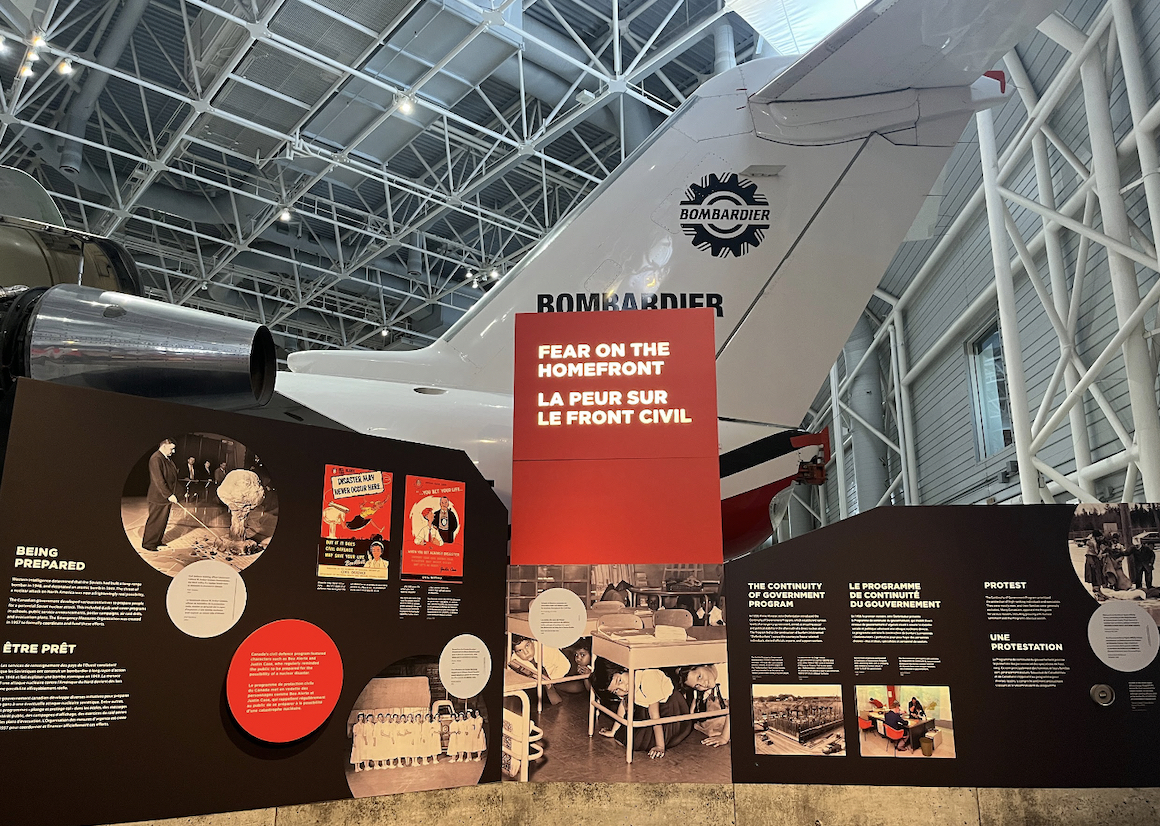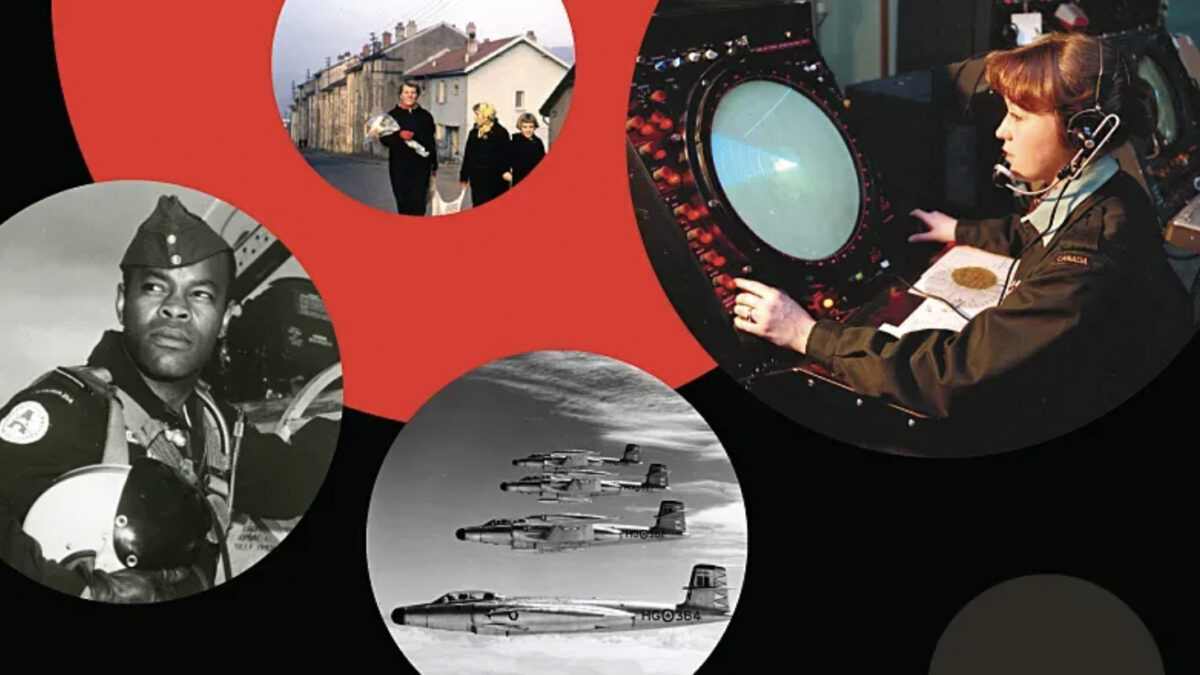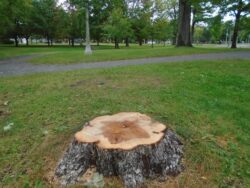Cans of beans, tomato sauce and corn line a bunker. Concrete walls and gasoline jugs filled with water bring an eerie feeling to a space at the back of the Canada Aviation and Space Museum.
In a time of rising global tensions, visitors can now find a new permanent Cold War exhibit, which coincides with the 75th anniversary of NATO, the military alliance Canada joined in 1949 in the face of the post-war threat to Western democracies posed by the Soviet Union.
Large planes, nuclear bomb preparation activities and a small bunker are just a few parts of the large exhibit.
Museum-goer Gary Hansen said the exhibit reminded him of his childhood.
“I’ve really been enjoying this exhibit,” the Ottawa resident said. “It brings me back to drills when I was in school where we hid under the desks.”
Curator Erin Gregory said the display has brought in many people with stories about their own time during the “cold” war so called because it lacked the “hot” clash of an all-out military engagement between the Soviet Union and the United States, and their respective allies — although numerous proxy wars were fought.
I’ve really been enjoying this exhibit. It brings me back to drills when I was in school where we hid under the desks.
Gary Hansen
“We have a lot of people coming in who are connected to people featured in the exhibit,” said Gregory. “That’s how an exhibit like this is built. We find people who know other people and that’s how the personal stories are found.”
Gregory said she has been working on the exhibit for two years. Exhibits of this scale require extensive research and “some internet stalking,” she said.


“For example, we have some content about Dr. Stephen Blizzard. He just has an incredible story and contributed so much to the field of aviation medicine, both within the RCAF (Royal Canadian Air Force) and then later as a civilian,” she explained.
This year is the 100th anniversary of the founding of RCAF gaining its “Royal” designation in 1924. The new museum exhibit is also part of the official celebration of the RCAF’s centennial.
Blizzard, who is featured, created standards and practices for aviation and aerospace medicine are in use today.
A Department of National Defence article marking Blizzard’s 2023 induction into the Canadian Medical Hall of Fame, says he was honoured for “leadership in Aerospace Medicine and his unique achievements as a CAF physician-pilot. A first-generation Black Canadian, Dr. Blizzard overcame systemic racism to become a pilot, physician, and decorated peacekeeper.”
The DND tribute called Blizzard “a courageous trailblazer who demonstrated leadership in adversity and a commitment to excellence” throughout his military career.
“When I found this information out, I went, how do I track him down? So we went through our process,” Gregory said.
Discoveries occurred in places most people wouldn’t expect, she added.
“We use Facebook and general Google searches,” she said. “A lot of people come to the museum and we’ll get to talking. With Blizzard, there were a lot of people who served with him that came in and in casual conversation we created the connection.”


Ottawa, as Canada’s capital, was central to the Cold War story in this country. The exhibit allows local residents to see their own experiences in history.
“It allows visitors to see themselves represented in the stories the museum tells about the significance of aviation in the growth and prosperity of this country,” said Christopher Kitzan, the museum’s director general.
It allows visitors to see themselves represented in the stories the museum tells about the significance of aviation in the growth and prosperity of this country.
Christopher Kitzan, director general, Canada Aviation and Space Museum
Hansen reflected on the bunker, which reminded him of his worries when he was a child during the Cold War.
“I remember my parents having so much canned food stocked in our basement,” he said. “It’s a feeling that reminds you of how fearful everyone was during that time.”
Hansen has been to numerous exhibits across Canada and the United States. He said one of his favourite elements is seeing the planes that served those decades.
“This Cold War exhibition brings together a fantastic selection of aircraft and unique artifacts which illustrate an incredibly challenging, but dynamic period of the Royal Canadian Air Force’s history,” Lt.-Gen. Eric Kenny, the current commander of the RCAF, said in a statement announcing the exhibit.
The museum hopes visitors will come to honour the RCAF and all the work its personnel did during the Cold War.
“If the Second World War was where the RCAF showed its mettle, the Cold War showed the world that given the right people and equipment, and with the support of their families and friends, Royal Canadian Air Force personnel can achieve almost anything,” stated Kenny.


![Artifacts at the Order of Sports Collection at the Museum of History in Ottawa on Nov.17, 2023 [Photo taken by Jayden Dill].](https://capitalcurrent.ca/wp-content/uploads/2023/11/Featured-Image-250x141.jpg)

